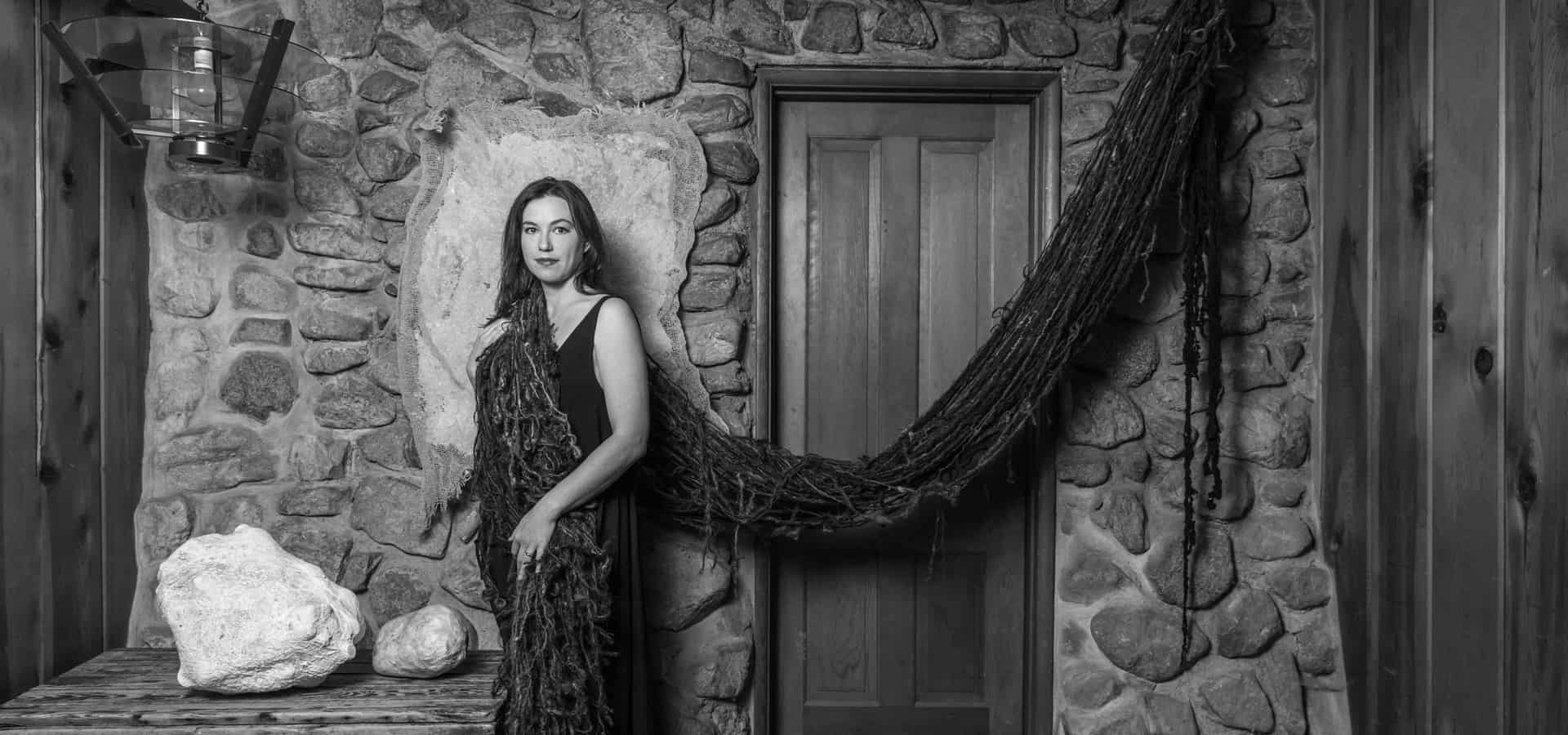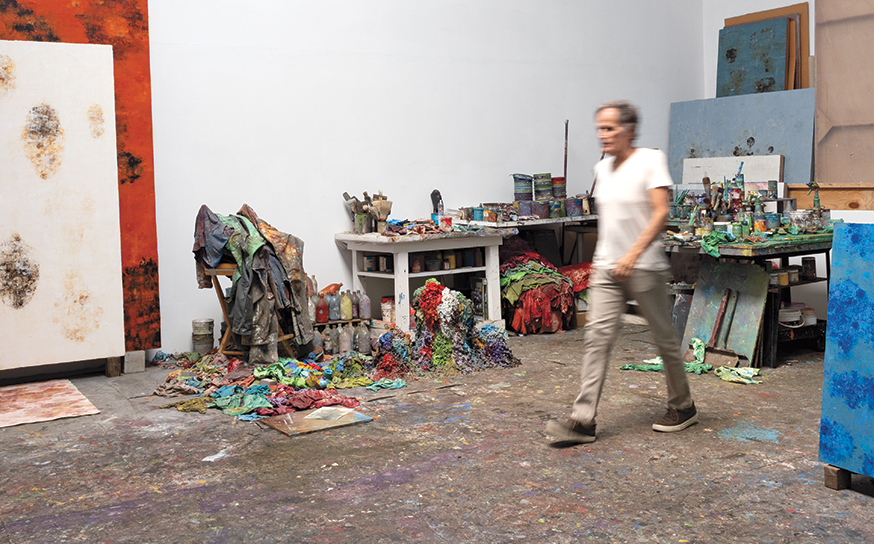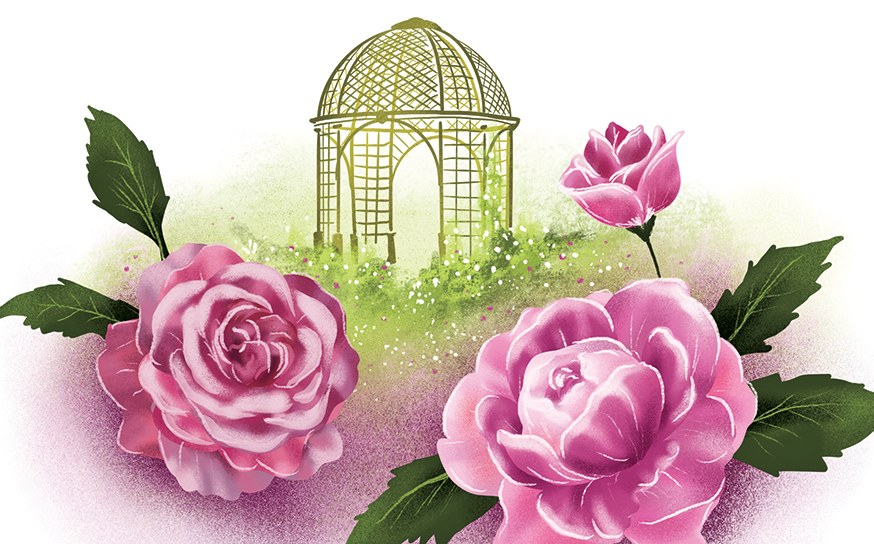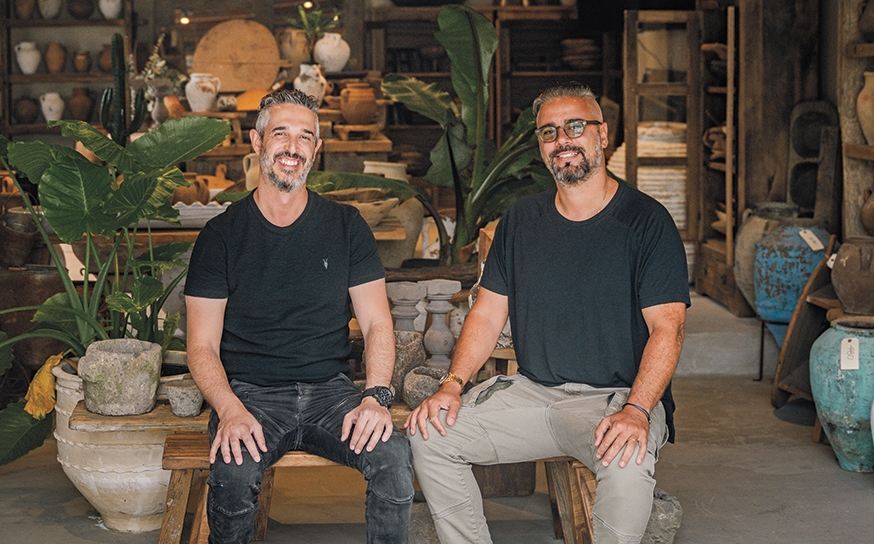Ethereal yet fiercely intelligent, a giggler who speaks with a slow, soft Valley drawl, Erika Ostrander surprises at nearly every turn. Her art is much the same way. One of her most prolific pieces is an untitled work of discarded human hair woven together on her mother’s old spinning wheel. She got the idea years ago when she was working in a waxing salon, sweeping up hair. “I’m taking the detritus of all these people,” she explains, “which is a material which on your body is sexualized and so connected to the idea or power of femininity or masculinity. Then it’s off the body and it’s this thing we discard, or it’s ‘gross.’ So I’m taking all of it and turning it into a whole again or a connection. It was a way for me to abstractly bring everything together.”
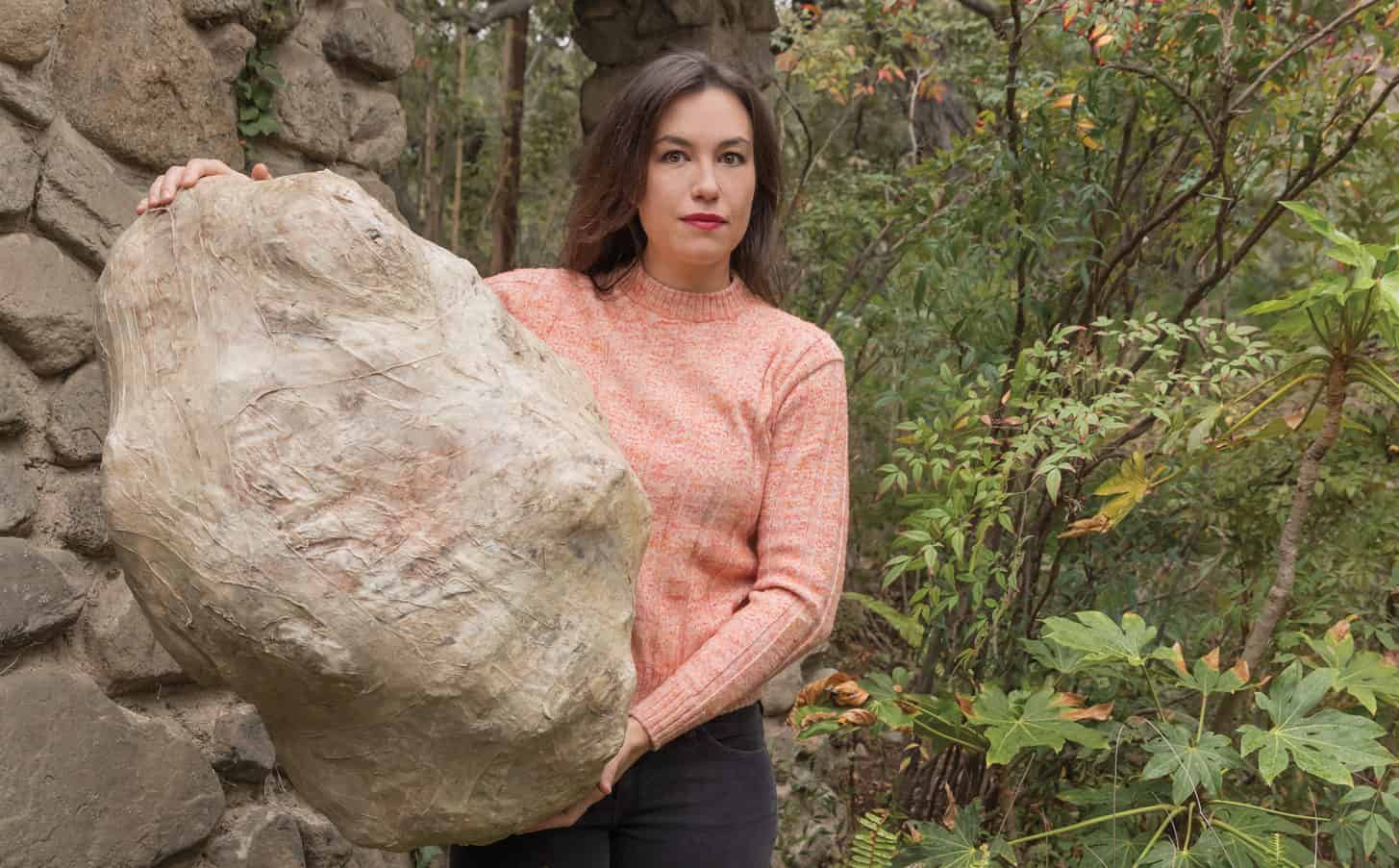
Erika holding “Hold My Bones” made from sausage casings and studio trash.
A native of Burbank, Erika and her husband, the artist Christian Tedeschi, recently moved back to the Valley after a short sojourn in Highland Park. They now live in an early 20th century stone cottage in Tujunga, somewhat fittingly near the famous McGroarty Art Center. A mixed-media artist working primarily in sculptures and installations, Erika’s works are spare and elegant, with beauty that belies complex meanings.
“As a young artist, I had this idea that I need to instill my will on the art; it’s got to be this way, because this is how I imagined it in my mind,” she explains. “Thinking about working with materials rather than dictating them was a big turning point for me. Because it was more about having a conversation and thinking about the history of the material, where it came from, the different ways the materials are perceived or understood.”
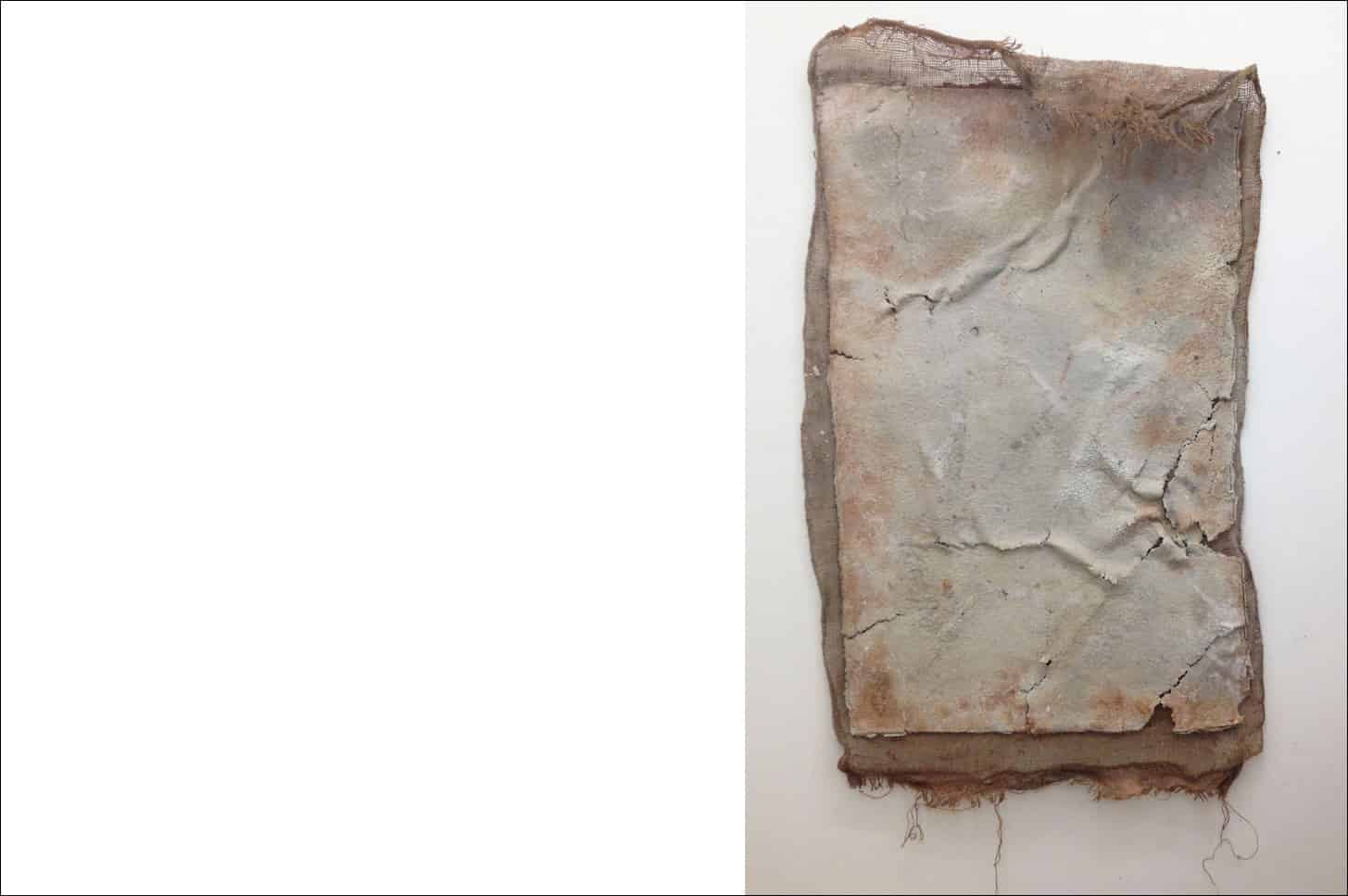
“Compression 2,” made from pulped paper, salt and burlap
Much like the Tujunga Indians who once called the Valley home, Erika has a holistic approach to sourcing materials. “No matter what you’re doing, you are creating so much waste,” she says. “So I wanted to find a way that I could sustain a practice without having to fill up my trash can all the time.”
Erika continues to use natural materials, including salt (in which she traces simple drawings), paper scraps, sausage casing and even fingernails, transforming them into artworks, which delight the eye—and make you think. “I’m just trying to take materials that are around us all the time and work with them … in a way that helps us see something in a new way, pay more attention to the nuance of things,” she explains. “Like the salt drawings, one of the amazing things is because salt is living in a way, it reacts to the atmosphere. So depending on if it’s humid or dry, they attract moisture or they’ll dry out. So the tracing is always changing, it’s always evolving. The work is a lot like us, right? It’s always in transition.”
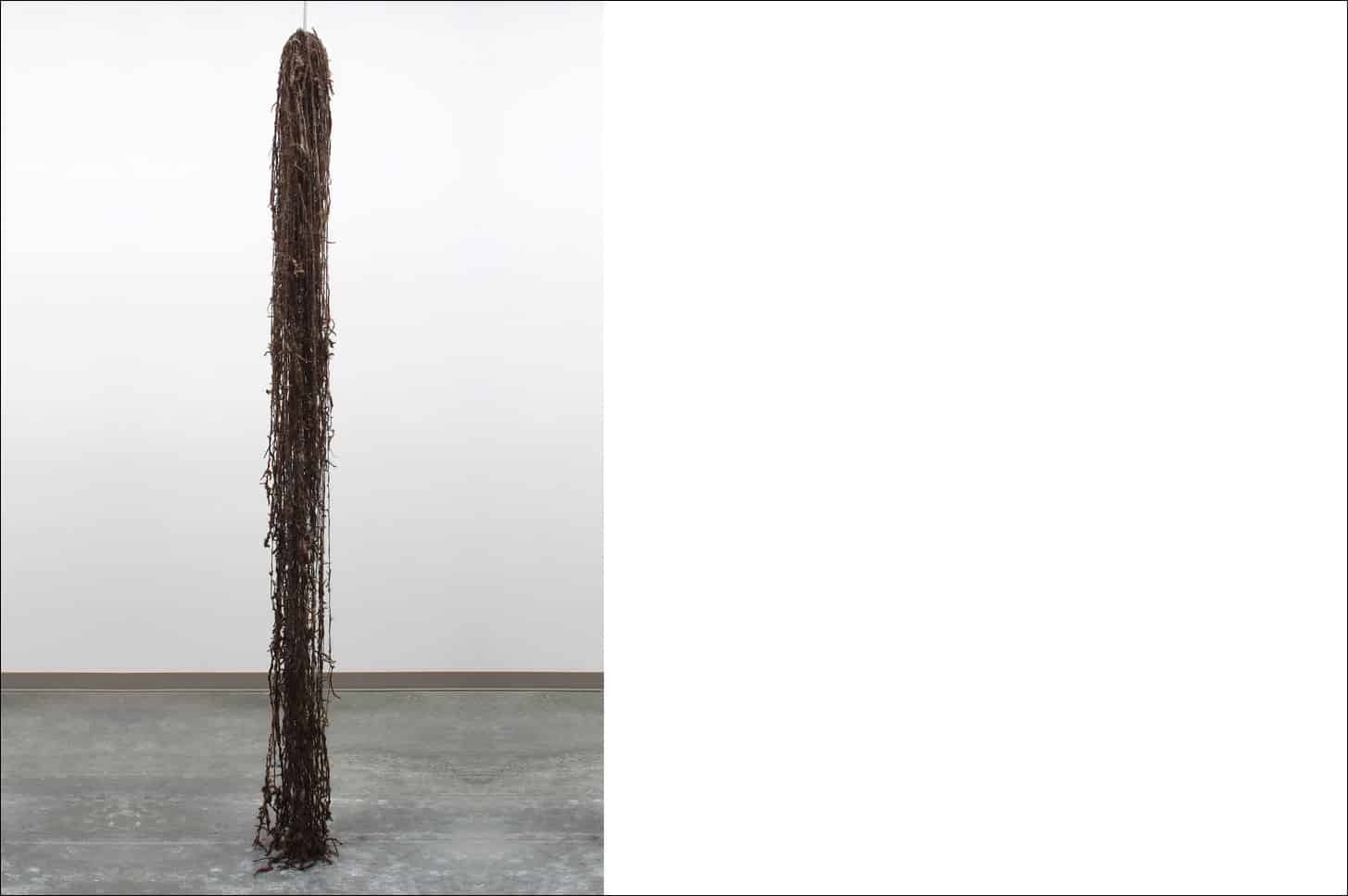
An untitled work comprised of human hair. Photo Credit: Vincent Alpino
The artist is also the exhibition coordinator at California State University, Northridge, where she curates shows featuring students and Valley legends like Jeffery Vallance.
Since she moved into her peaceful, wooded new home, Erika has also reconnected with her roots, researching the rich artistic traditions of the area. “The Valley is what I’ve known my entire life,” she says. “It is so diverse, and it has such an interesting history. So much of our history gets hidden. I like the idea of making it seen again.”
Painter and Sculptor Charles Fine Says Growing Up Valley is a Major Influence in His Art
Indelible impressions.
Join the Valley Community






